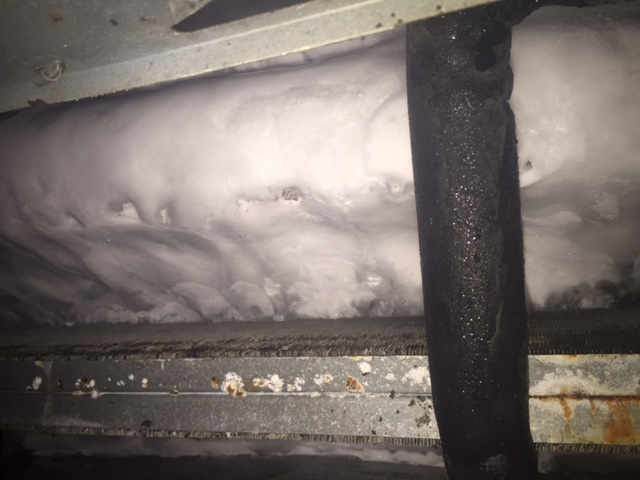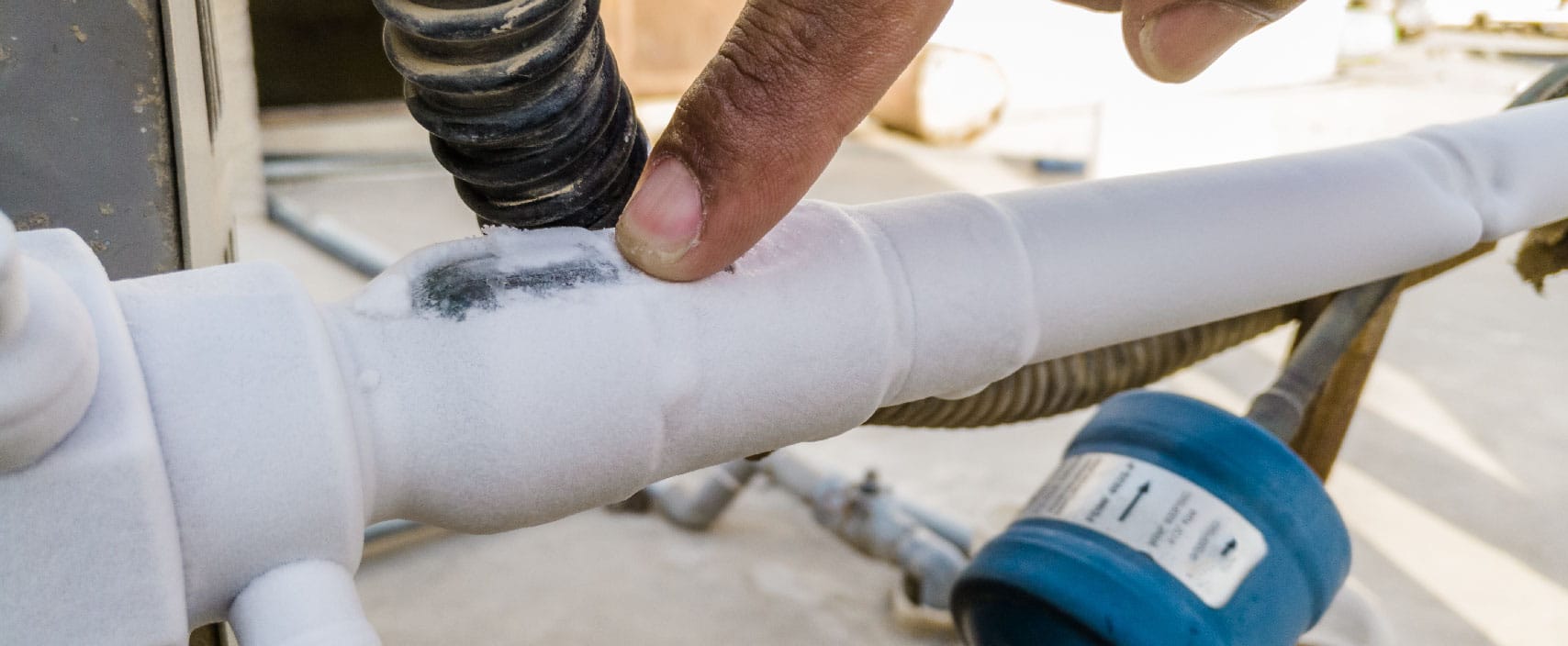The Air Conditioner Pipe Is Frozen - What Should I Do? Instructions for Residents
The Air Conditioner Pipe Is Frozen - What Should I Do? Instructions for Residents
Blog Article
We have stumbled upon this article about How can I fix an air conditioner’s frozen pipe? below on the net and accepted it made perfect sense to discuss it with you over here.

Introduction
Uncovering that your air conditioning pipe is iced up can be concerning, specifically during warm summer season when you rely on your air conditioning unit one of the most. Comprehending what to do in such a scenario is essential to stop further damage to your air conditioning system and guarantee your comfort inside your home.
Recognizing the Causes
Several elements can contribute to the freezing of an air conditioner pipe. Understanding these reasons can help you resolve the problem efficiently.
Lack of Airflow
One common root cause of a frozen air conditioner pipe is inadequate air movement. When the airflow over the evaporator coil is limited, it can cause the coil to go down below freezing temperature level, resulting in ice development on the pipe.
Reduced Refrigerant Levels
Insufficient cooling agent degrees in your air conditioning system can likewise cause a frozen pipe. Reduced cooling agent degrees can trigger the stress in the system to go down, leading to the cold of moisture on the evaporator coil.
Cold Weather Conditions
In chillier climates, freezing temperature levels outside can contribute to the cold of a/c pipelines. If your a/c unit is not appropriately insulated or if there are leakages in the ductwork, cold air can penetrate the system, causing the pipe to ice up.
Dirty Air Filters
Dirty or clogged air filters can restrict air movement in your AC system, causing numerous issues, consisting of an icy pipeline. It's necessary to change or clean your air filters consistently to ensure proper air flow and stop ice build-up.
Indicators of a Frozen Air Conditioner Pipe
Recognizing the signs of a frozen a/c pipe is important for timely action.
Decreased Airflow
If you discover a significant reduction in airflow from your vents, it might show a frozen pipeline.
Ice Buildup on the Pipe
Noticeable ice accumulation on the cooling agent line or the evaporator coil is a clear indication of a frozen air conditioner pipe.
Unusual Sounds from the Unit
Unusual sounds, such as hissing or gurgling, originating from your AC system can indicate that there's ice existing on the pipeline.
Immediate Actions to Take
When faced with an icy AC pipe, it's vital to act quickly to avoid additional damages to your air conditioning system.
Switching off the AC
The initial step is to shut off your ac unit to stop the system from running and aggravating the concern.
Looking for Blockages
Examine the location around the indoor device for any kind of obstructions that may be obstructing air movement, such as furnishings or curtains.
Thawing the Pipe
You can make use of mild methods like placing towels taken in warm water around the icy pipeline to assist thaw it slowly.
Safety nets
Taking safety nets can help stay clear of future incidents of an icy air conditioner pipe.
When DIY Methods Fail
If your efforts to thaw the pipe or address other concerns are unsuccessful, it's time to call an expert.
Relevance of Hiring a Professional HVAC Technician
A licensed HVAC professional has the know-how and tools required to detect and repair problems with your AC system safely and successfully.
Normal Maintenance Checks
Schedule routine upkeep checks with a professional HVAC service technician to make sure that your air conditioner system is running efficiently.
Altering Air Filters
On a regular basis change or cleanse your air filters to stop air movement constraints and keep ideal efficiency.
Protecting Exposed Pipes
If your a/c pipelines are subjected to chilly temperatures, consider insulating them to stop cold throughout winter season.
Seeking Professional Help
If DIY approaches fall short to settle the concern or if you're uncertain about just how to continue, it's best to look for support from a qualified HVAC service technician.
Final thought
Dealing with an icy a/c pipeline can be an aggravating experience, yet understanding how to react can help decrease damages and restore comfort to your home. By understanding the causes, recognizing the indicators, and taking prompt action, you can properly deal with the concern and prevent future incidents.
Frozen AC Line: Why It Happens & What To Do About It
A frozen AC line can be a rather peculiar sight in a place like Phoenix, Arizona where nothing ever freezes. In this post, we’ll discuss what makes an air conditioner line frozen – and what you can do about it.
Dirty Air Filters
Did you know that you should be cleaning or replacing your air filters on a monthly basis? Failing to do this can result in airflow issues that, in turn, cause your evaporator coils and lines to freeze over. You’ll notice a buildup of ice on both components, although the buildup on your pipes will, of course, be more evident unless you open your air condition up to reveal the coils.
What To Do About It
Give your air filter a good cleaning if it’s reusable. If not, replace the filter outright. Next, switch your air conditioner’s fan setting on and leave it there for 2-3 hours. This will draw warm air in, helping to thaw your evaporator coil. You can also check out this article for some tips on cleaning the coils themselves if you’d like to speed the process up. Before you switch the unit back to its normal state, make sure the supply vents are completely unobstructed and free of dust or other debris.
If you keep having this issue even after replacing your filters regularly, contact a local HVAC repair company and have them inspect your evaporator coil, ductwork, and any other components that may be at fault. If you live in the Phoenix, Arizona area, give American Home Water and Air a call.
Low Refrigerant Levels/Leakage
What To Do About It
Contrary to what air conditioner “recharge” companies often tell their clients about refrigerant, it should never need to be simply refilled. You see, refrigerant runs in what experts refer to as a “closed loop.” Refrigerant really shouldn’t be leaving that loop. If it is, you’ve got a leak.
Paying someone to come and pump more refrigerant into your system (aka “recharge” it) isn’t the solution. Doing that will simply kick the can down the road. Besides, refrigerant leaks can be harmful to the environment and people in your home.
Rather, you need to take care of the leak with the help of a technician. Check out this article for some more information about dealing with air conditioners that are leaking refrigerant. Before you contact a technician, switch your thermostat to the off position. Then, switch the fan setting on and let it run for 2-3 hours so the unit can thaw.
Improper Temperature Setting
Improper temperature settings can also cause a drop in your air conditioner’s pressure. What many people don’t realize is that air conditioners are actually designed to run when temperatures have fallen above roughly 60 degrees Fahrenheit. If you run the unit when it’s cold outside, you’ll run into many issues, including frozen components.

We had been made aware of that write-up about What Do I Do If My AC Pipe Is Frozen through an associate on another blog. Do you know another person who is serious about the subject? Take a moment to promote it. Thank-you for taking the time to read it.
Call Today Report this page